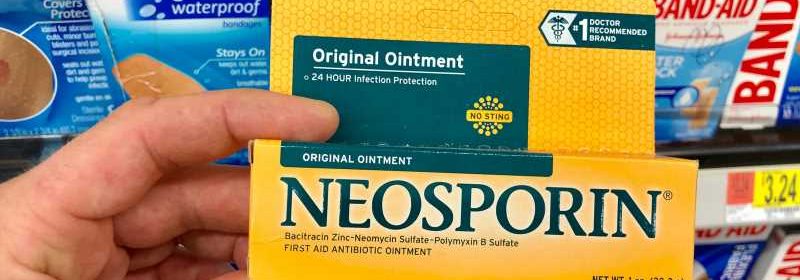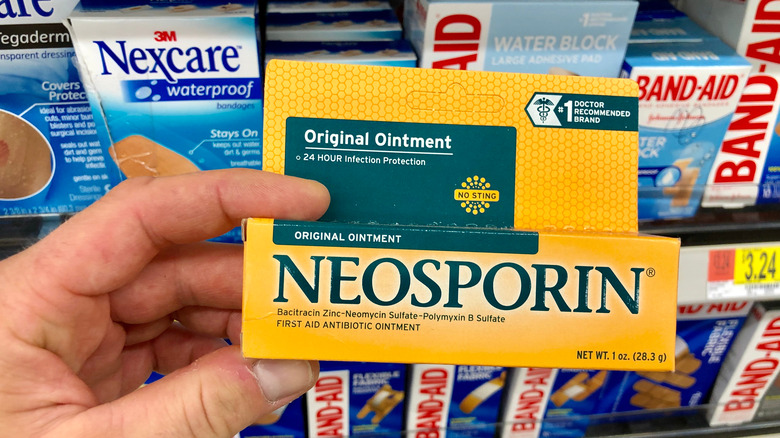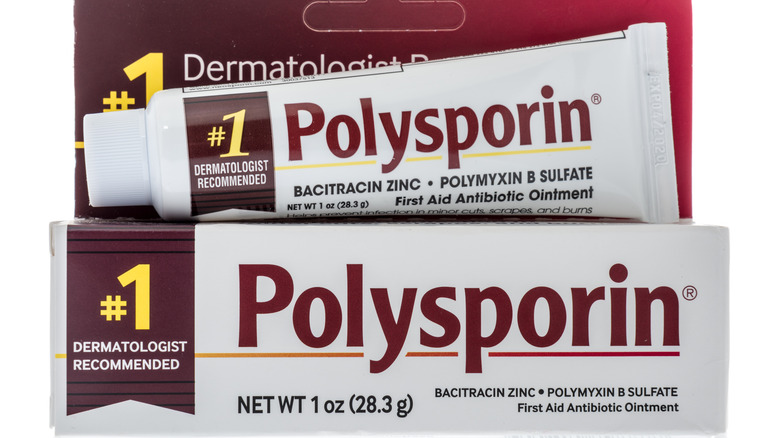Polysporin Vs. Neosporin: What’s The Difference?


By Rachel Dillin/Sept. 8, 2021 12:58 pm EDT
If you’ve ever had a cut or minor skin infection, chances are you’ve cleaned it, put Neosporin or Polysporin on it, and covered it with a Band-Aid to help it heal quickly without infection. According to WebMD, the antibiotics in the cream or ointment might slow or stop the growth of any bacteria in minor wounds.
Both medications have similar uses, Iodine reported. They work best for small or minor cuts, scrapes, and burns. You can easily buy either over-the-counter without a prescription, but you might want to discuss using it with your doctor if you have any questions. The best news is both these antibiotic ointments have generic versions available, which could help you save money. However, while they both work similarly, they do have their downsides, and believe it or not, there is a bit of a difference between them, so you can’t exactly use them interchangeably. Read on to find out more.
Here's the main difference between Neosporin and Polysporin
While Neosporin and Polysporin are similar, there’s at least one significant difference, according to Drugs.com. Both ointments contain bacitracin zinc and polymyxin B sulfate. However, only Neosporin contains neomycin. According to Iodine, Polysporin is easy to use, but it may cause a skin rash in some people and can’t be used for significant skin infections, animal bites, deep wounds, or serious burns. It comes in a powder or an ointment. As for Neosporin, it is not for use in deep cuts or injuries, but you can use it to help treat pain, itching, and scars in specific formulations. It comes in several forms, including ointment, cream, foam, and spray.
For minor cuts, you could likely use either Neosporin or Polysporin with the latter having an edge if you need a formulation for scars, itching, or pain. However, if it’s something more serious, you might need to talk to your doctor about more appropriate treatment options.
Source: Read Full Article
